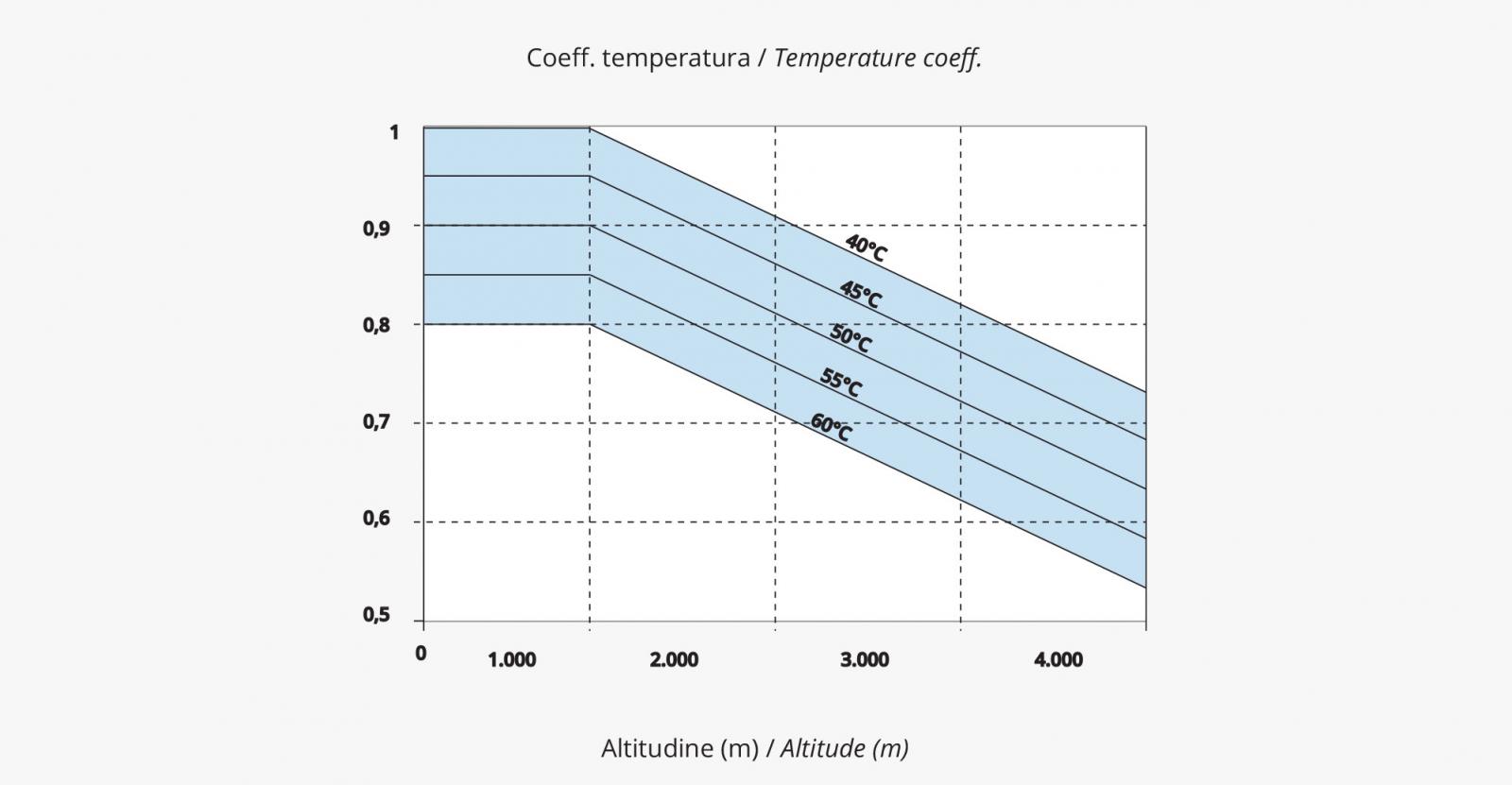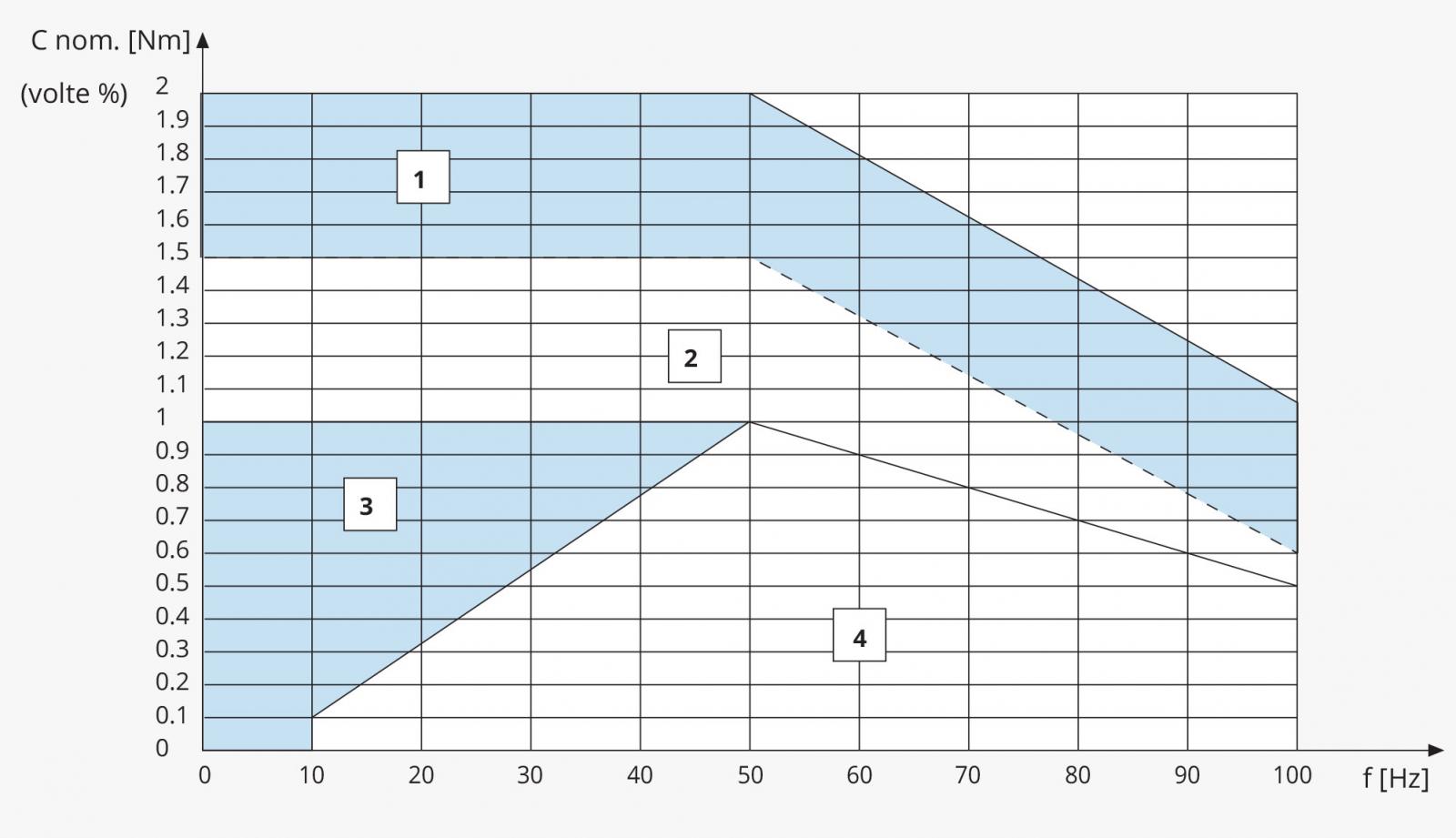
(per CEI EN 60034-1 / IEC 34-1)
Pn - Rated power [W]:
This is the mechanical power supplied to the shaft, expressed in kW per international standards.
You will also find it expressed in hp in the tables.
Vn - Rated voltage [Volt]:
This is the incoming voltage to be applied to the motor terminals in standard configurations 230 V/400V/50 Hz/S1, from size IEC 160 and over series voltage 400V/690V/50Hz.
In asynchronous three-phase motors, a voltage variation of up to ±10% of rated values is tolerable.
Ca - Starting with rotor locked [Nm]:
Minimum torque provided by the motor with the rotor blocked, powered at the rated voltage and frequency.
C max - Maximum torque [Nm]:
this is the maximum torque that the motor can develop during operation when powered at the rated voltage and frequency, without brusquely stopping or slowing down.
Cn - Rated torque [Nm]:
This is the torque resulting from the rated power at the rated rpm.
The rated torque value is determined by the formula:

Pn = rated power expressed in kW
n = rated rotation speed expressed in rpm
Cins - Pull-up torque
Minimum torque during motor start up
ns - Synchronous speed:
The synchronous speed (see graph on the next page) is determined by the formula:


Altitude and temperature
Unless otherwise agreed with the manufacturer, the machines are designed to run under the following nominal conditions:
For ambient conditions other than those stated above, the powers vary as indicated in the following diagram:


Controlling standard Neri motors T series with constant inverter (V/F)
The asynchronous three-phase squirrel-cage motors by NERI (in the catalogue) may be controlled by a constant V/f inverter.
These motors have been specifically designed with use at variable speed, torque and power in mind.
It has therefore been possible to achieve excellent results in terms of limited temperatures and high performance even when controlled by inverters thanks to the use of high-quality materials such as magnetic sheet metal with excellent flux features, curve (B-H), and with 1-Tesla leak amounts of around 10 W/kg at 50 Hz.
Our standard motors were then tested, achieving the following performance, shown in graph form as purely indicative and not binding to the company:

1 Power cooled motor area - IC 416 Limited duration transient overspeed (variable according to the type of inverter and motor)*
2 Self-cooled motor area - IC 411 Limited duration transient overspeed (variable according to the type of inverter and motor)*
3 Power cooled motor area - IC 416 (without overtorque)
4 Standard self-cooled motors - IC 411
* apart from all technical controls as per IEC 34-1
Torque characteristics
In this graph, the curves define the permanent torque and the transient overspeed area (limited duration) on a standard, self-cooled motor and a power cooled motor.
In the case of the self-cooled motor (area 3), the torque below a rated 50 Hz must be appropriately limited due to the reduced self-cooling so that the winding temperature does not reach levels hazardous to their integrity.
This limitation may obviously be avoided by adopting independent power cooling of the motor or, for low rpm operation, if it occurs only briefly with rest intervals sufficient to cool the motor (area 2).
Power cooling should be selected with a throughput [m3/min] suited to the thermal duty of the motor.
For greater temperature control, if the motor is to be used with a torque above the rated level or at a low rotation speed, we recommend using a bimetallic thermal cut-out switch.
Attention (CEI EN 60034-1)
In case you control standard serie T Neri Motors with inverter, we are not abel to guarantee the duration, because the insulation is subject to high peaks of voltage.
Maximum speed brakes with inverter around 3600 rpm when operating type and guarantee (AC/DC).